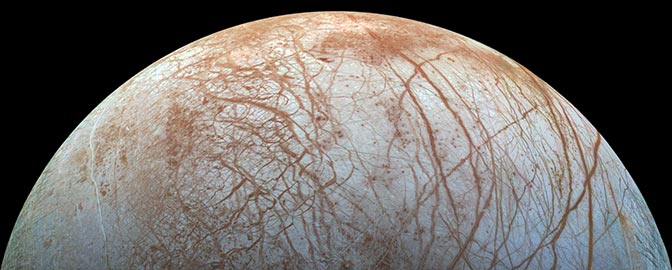ESCAPADE, NASA’s twin Mars orbiters
- ESCAPADE will explore Mars’ magnetic field and atmosphere to learn how the planet became less habitable over time.
- If successful, this would be the first multi-spacecraft mission wholly dedicated to orbital science around Mars.
- ESCAPADE is part of a NASA program to fly cheaper but higher-risk space missions.
Why is NASA exploring Mars’ magnetic field?
Billions of years ago, rivers flowed across Mars and lakes dotted its surface. The planet was warmer and — maybe — hospitable to life.
Back then, Mars had a thick atmosphere instead of the tenuous envelope surrounding it today. This atmosphere helped at least intermittently maintain the planet’s liquid water, which is essential for life as we know it. But somehow, over the course of tens or hundreds of millions of years, almost all of Mars’ atmosphere was lost.

Today, many scientists think that Mars lost its atmosphere in part because it lacked (or lost) the right kind of magnetic field. Around Earth, such a magnetic field shields us from a constant flow of charged particles unleashed by the Sun, called the solar wind. But on Mars, the solar wind could have instead hit the planet’s atmosphere in a way that helped energize lots of it into space.
NASA’s ESCAPADE mission aims to explore how this atmospheric escape is happening on Mars now, so that scientists can get a better sense of how Mars lost its atmosphere in the past. Solving this puzzle could give us a window into how habitable our neighboring planet truly was, and for how long. It would also hint at the kinds of worlds that might possibly be habitable throughout the galaxy.
How ESCAPADE works
The Escape and Plasma Acceleration and Dynamics Explorers (ESCAPADE) mission uses two identical spacecraft. The twin probes are designed to complement each other and unlock a more complete, real-time picture of how the Martian atmosphere blows off into space.

Both spacecraft will launch together in fall 2025. They will each take slightly different paths to Mars, and one will arrive in orbit around the red planet a few days after the other.
No space mission has ever sent two orbiters to Mars at the same time. By having two probes in different places around Mars, scientists will be able to disentangle how much conditions around the planet are shifting from moment to moment or from place to place. ESCAPADE will also be able to use one probe to measure the solar wind as it comes in toward Mars, while the other watches how the planet’s atmosphere responds at almost the exact same instant.
“With ESCAPADE, we’re going to be able to do that for the first time,” said Robert Lillis, principal investigator for ESCAPADE and associate director for planetary science at the UC Berkeley Space Sciences Laboratory. This should give scientists a clearer sense of cause and effect in Mars’ atmospheric escape.
ESCAPADE is part of NASA’s Small Innovative Missions for Planetary Exploration (SIMPLEx) program, which aims to explore space more cheaply in exchange for accepting higher risk. That typically means less testing of the spacecraft and its systems, less built-in redundancy in case something goes wrong, and faster development timelines. The upshot is that ESCAPADE cost less than $80 million. For comparison, MAVEN, another Mars orbiter that studied atmospheric escape and helped lay the groundwork for ESCAPADE, cost more than five times that amount to build and launch.
“More science per dollar, bang for your buck, call it what you will,” said Lillis, “We’re one of the guinea pigs.”

Mission profile
ESCAPADE is expected to launch no earlier than Nov. 9, 2025, on the second mission of Blue Origin’s New Glenn rocket. After taking off from NASA’s Kennedy Space Center in Cape Canaveral, Florida, the probes will travel to a holding position and remain there for about a year while studying space weather near Earth. Once the planets are in the right arrangement for a favorable trajectory to Mars, ESCAPADE will head off again and arrive at the red planet around September 2027.
The spacecraft will begin their science mission about six months later. First, the pair will fly in the same orbit, with one probe coming after the other like beads on a necklace. Then they will switch to travel in separate orbits, measuring different parts of the Martian magnetosphere. The mission is expected to wrap up around May 2029.
ESCAPADE was originally expected to launch as a rideshare with NASA’s Psyche mission in 2022, but when NASA decided to launch Psyche on a SpaceX Falcon Heavy rocket, ESCAPADE could not be updated in time to take into account the more energetic orbit such a launch would result in. The launch vehicle was instead switched to Blue Origin’s New Glenn, and the launch date was pushed back.

What are the ESCAPADE spacecraft like?
ESCAPADE’s two spacecraft, called Blue and Gold, are each about as big as copy machines. The main bodies of the spacecraft are cheaper than is usual for a Mars mission because they are actually built off a modified piece of Rocket Lab’s Electron rocket: the “kick stage,” which would otherwise be used to help boost payloads into orbit.
Though ESCAPADE is cheap for a NASA Mars mission, the team is “not cutting any corners” when it comes to the actual science instruments onboard the probes, says Lillis. Each spacecraft comes with an identical set of three science experiments. The ESCAPADE Magnetometer (EMAG) — which is almost exactly the same as the magnetometer on NASA’s InSight Mars lander — will measure magnetic fields, the ESCAPADE Electrostatic Analyzer (EESA) will measure charged particles, and the ESCAPE Langmuir Probe (ELP) will measure both charged particles and electric potentials.
Who is leading the ESCAPADE mission?
ESCAPADE is led by the Space Sciences Laboratory at the University of California, Berkeley, with Robert Lillis as principal investigator. Rocket Lab built the spacecraft buses from its Photon model, and the probes will be launched by Blue Origin’s New Glenn rocket.
Embry-Riddle Aeronautical University provided the ELP experiment, while the NASA Goddard Space Flight Center provided the EMAG experiment. Northern Arizona University provided the spacecraft’s optical and infrared cameras. Navigation will be conducted by Advanced Space and the University of California, Berkeley; the latter also provided the mission’s EESA experiment. NASA is sponsoring the mission, and the agency’s Deep Space Network will communicate with the ESCAPADE spacecraft.


 Explore Worlds
Explore Worlds Find Life
Find Life Defend Earth
Defend Earth

